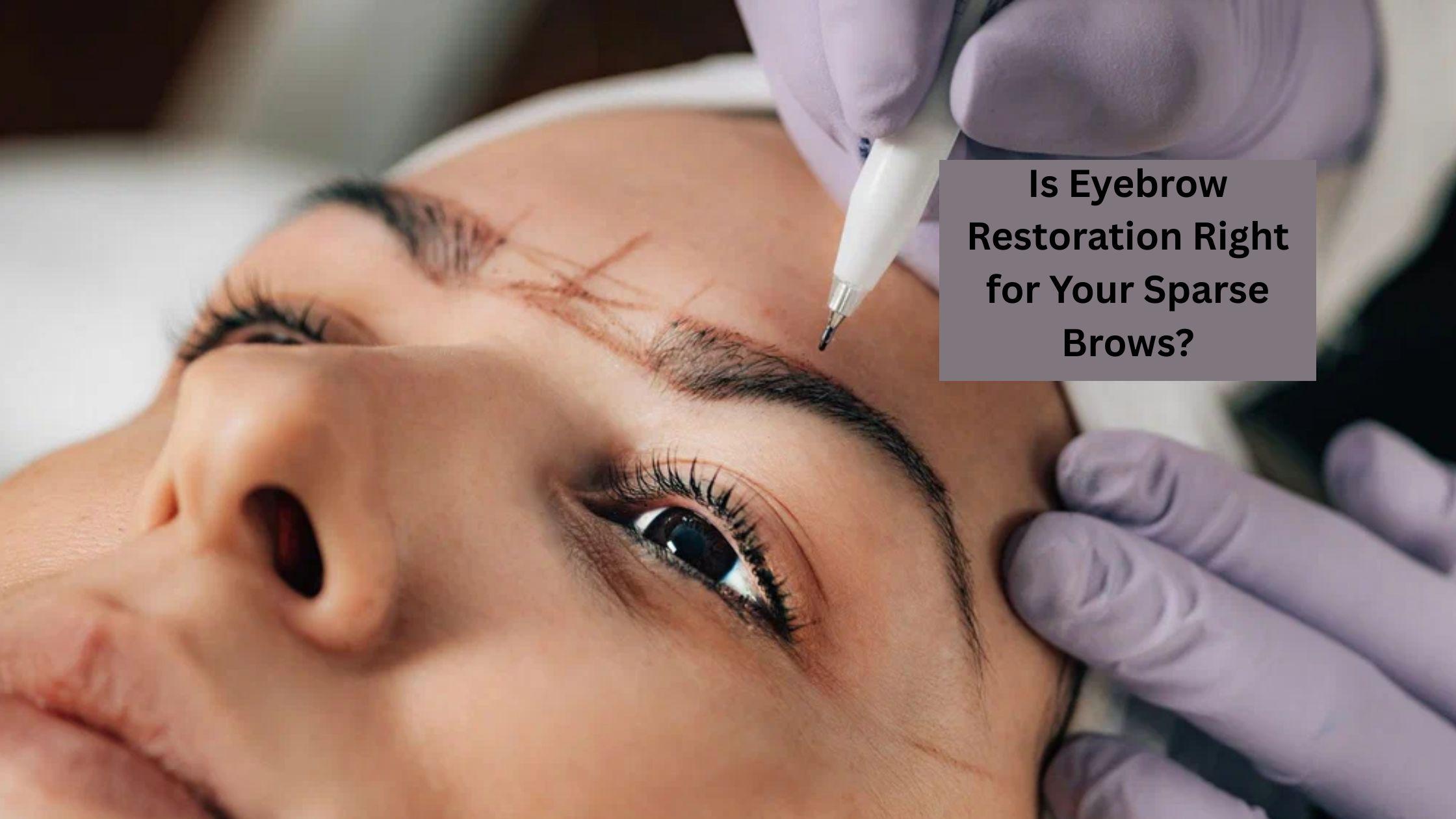Well-defined eyebrows are one of the most striking features of the face. They shape your eyes, frame your expression, and even influence how youthful or balanced your features appear. But for many individuals, sparse brows caused by genetics, over-plucking, medical conditions, or trauma can be a source of frustration. If you're frustrated with constantly using brow pencils or undergoing repeated microblading sessions, eyebrow restoration could be the long-lasting, natural solution you've been looking for.
What Is Eyebrow Restoration?
Eyebrow restoration is a specialized hair transplant procedure that involves harvesting healthy hair follicles—typically from the scalp—and carefully transplanting them into the brow area. The process is designed to enhance the shape, thickness, and symmetry of the eyebrows while ensuring a natural appearance. The most common technique used for eyebrow transplant is Follicular Unit Extraction (FUE), which involves extracting individual follicles from the donor site and implanting them with precision into the brow area. These follicles grow naturally and can be trimmed and styled like normal brow hairs.
Common Causes of Sparse Eyebrows
Understanding the root cause of your brow thinning is the first step in deciding whether eyebrow restoration is the right choice. Sparse eyebrows may be due to:
- Over-plucking or waxing: Years of excessive grooming can cause permanent damage to hair follicles.
- Genetics: Some individuals are born with thin or patchy brows.
- Medical conditions: Conditions like alopecia and thyroid disorders can cause brow hair loss.
- Ageing and hormonal changes: As we age, hair—including eyebrow hair—can become finer and less dense.
- Trauma or scarring: Burns, surgeries, or injuries can create bald spots in the brow region.
Are You a Good Candidate for Eyebrow Restoration?
While eyebrow transplants offer impressive results, they’re not for everyone. Ideal candidates usually:
- Have thinning or missing eyebrows due to genetics, over-plucking, or trauma
- Have sufficient donor hair, usually at the back of the scalp
- Want a long-lasting solution and are committed to post-op care
- Maintain realistic expectations about the results the procedure can deliver, understanding that outcomes vary based on individual factors.
A personalized consultation with an experienced hair restoration specialist will determine if you're a suitable candidate.
Benefits of Eyebrow Restoration
Several advantages make eyebrow restoration stand out from temporary fixes like microblading or brow makeup:
- Permanent results: Transplanted hairs grow naturally and permanently.
- Natural appearance: Your hair is used, ensuring it blends seamlessly with existing brow hair.
- Custom shaping: Surgeons design a brow shape tailored to your face and features.
- Confidence boost: Full, symmetrical brows can make your entire face look more balanced and refreshed.
What to Expect During and After the Procedure
Before your eyebrow transplant procedure, a detailed consultation is held to discuss your goals and design the perfect brow shape. On the day of the surgery, local anesthesia is administered for a comfortable, pain-free experience. The FUE method is commonly used, where tiny incisions are made to implant each follicle carefully at the correct angle and direction.
The procedure typically lasts several hours, depending on the level of restoration needed and the number of grafts required for optimal results. There is minimal downtime, and most patients return to normal activities within a few days. The transplanted hairs will initially shed, which is a normal part of the healing process, but new growth usually starts within 3 to 4 months and gradually becomes fuller over time.
Eyebrow Restoration vs. Other Brow Enhancement Methods
While microblading offers temporary results through semi-permanent pigment, it doesn’t provide actual hair growth. Topical serums can stimulate some growth but are limited in their effectiveness. In contrast, eyebrow restoration offers real, lasting results because it involves actual hair follicles. Though the upfront cost of a surgical eyebrow transplant may be higher, it saves money over time by eliminating the need for constant touch-ups or cosmetic products. It’s the most natural and low-maintenance option for long-term brow enhancement.
Risks and Considerations
As with any surgical procedure, eyebrow restoration comes with some mild risks. These may include temporary swelling, redness, and slight discomfort. There’s also a learning curve in maintaining the new brows, as transplanted hairs may grow slightly faster than natural brow hair and require trimming. Choosing a highly experienced, board-certified specialist significantly reduces risks and ensures symmetrical results. Surgeons with a deep understanding of facial symmetry, hair angling, and density are essential for achieving the desired look.
Conclusion
If you’re tired of sparse brows and looking for a natural, long-lasting solution, eyebrow restoration could be your ideal option. It restores both fullness and shape while also enhancing your confidence and making your daily routine easier. To ensure optimal results, consult a trusted hair restoration expert who specializes in delicate facial hair transplantation. Whether you're aiming to correct over-plucked brows or enhance your natural appearance, their team is here to guide you through every step toward achieving fuller, more youthful brows.
